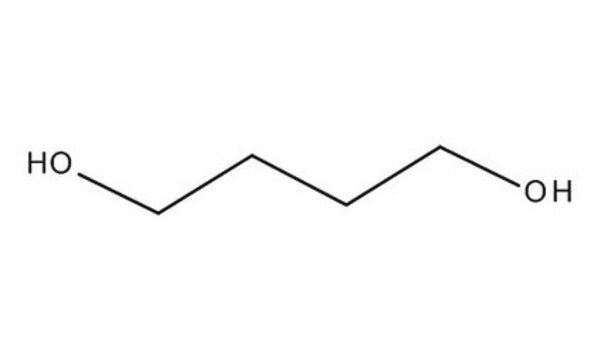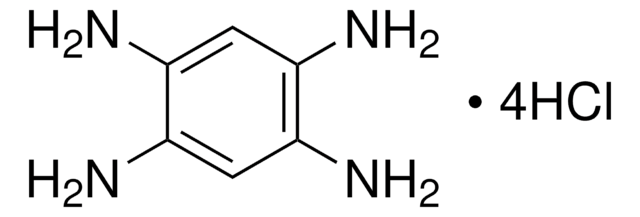240559
1,4-Butanediol
ReagentPlus®, ≥99%
Synonym(s):
1,4-Butylene glycol, Tetramethylene glycol
About This Item
Recommended Products
vapor density
3.1 (vs air)
Quality Level
product line
ReagentPlus®
Assay
≥99%
autoignition temp.
698 °F
refractive index
n20/D 1.445 (lit.)
bp
230 °C (lit.)
mp
16 °C (lit.)
density
1.017 g/mL at 25 °C (lit.)
functional group
hydroxyl
SMILES string
OCCCCO
InChI
1S/C4H10O2/c5-3-1-2-4-6/h5-6H,1-4H2
InChI key
WERYXYBDKMZEQL-UHFFFAOYSA-N
Looking for similar products? Visit Product Comparison Guide
General description
Application
Legal Information
Not finding the right product?
Try our Product Selector Tool.
Signal Word
Warning
Hazard Statements
Precautionary Statements
Hazard Classifications
Acute Tox. 4 Oral - STOT SE 3
Target Organs
Central nervous system
Storage Class Code
10 - Combustible liquids
WGK
WGK 1
Flash Point(F)
273.2 °F - closed cup
Flash Point(C)
134 °C - closed cup
Personal Protective Equipment
Choose from one of the most recent versions:
Already Own This Product?
Find documentation for the products that you have recently purchased in the Document Library.
Customers Also Viewed
Protocols
99%; Glycerol, ≥99.5%; Tetraethylene glycol, 99%
Our team of scientists has experience in all areas of research including Life Science, Material Science, Chemical Synthesis, Chromatography, Analytical and many others.
Contact Technical Service









